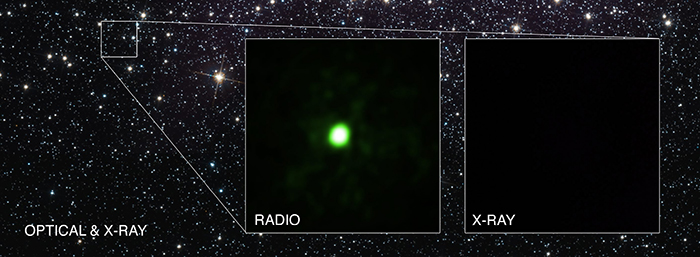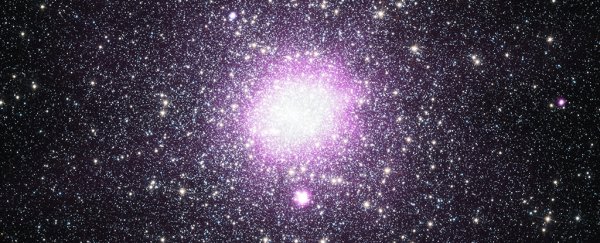Scientists have just discovered a 'hidden' black hole, called VLA J2130+12, hiding inside the Milky Way. The reason it has eluded astronomers until now is that it hasn't been acting the way black holes normally do.
Simply put, this black hole is quieter than we might expect and is in many ways a "stealth black hole", as one of the astronomers describes it. It's pulling in nearby material, like all black holes do, but at a very slow rate – and that's why it's previously been missed.
What's more, the new discovery indicates there might be millions of these stealth black holes hidden across the Universe waiting to be discovered. Astronomers: recalibrate your telescopes.
Spotting black holes isn't quite as simple as pointing a telescope at the sky – we can only really 'see' them based on the effect they have on nearby matter, which means these celestial phenomena can go undetected for a very long time.
"Usually, we find black holes when they are pulling in lots of material," explained lead researcher Bailey Tetarenko from the University of Alberta in Canada. "Before falling into the black hole this material gets very hot and emits brightly in X-rays. This one is so quiet that it's practically a stealth black hole."
A "peculiar" source of radio waves first tipped off experts to the presence of this black hole.
These radio waves were being emitted as strongly as if they were coming from a black hole, but the researchers were only detecting faint pulses of X-rays, which doesn't match up with our understanding of how black holes work. The team realised that these weak X-rays were a result of the black hole working so slowly.
VLA J2130+12 has about one-tenth to one-fifth the mass of our own Sun and is 7,200 light-years away, which is well inside our own Milky Way. According to the researchers behind the new discovery, some of these hidden black holes could be even closer to Earth: thankfully though they'll still be many light years away, so there's no danger of us being sucked into a void just yet.
 Credit: NASA
Credit: NASA
Astronomers used data from some serious bits of space kit to work out exactly what VLA J2130+12 is. They combined readings from NASA's Chandra X-ray Observatory, the Hubble Space Telescope, and the Karl G. Jansky Very Large Array (VLA).
Many more regions of the sky will need to be mapped in this kind of detail if we're to spot other stealth black holes like this one.
"Unless we were incredibly lucky to find one source like this in a small patch of the sky, there must be many more of these black hole binaries in our Galaxy than we used to think," said one of the researchers, Arash Bahramian from the University of Alberta.
The findings are published in The Astrophysical Journal.
Image: X-ray: NASA/CXC/Univ. of Alberta/B.Tetarenko et al; Optical: NASA/STScI; Radio: NSF/NRAO/VLA/Curtin Univ./J. Miller-Jones
